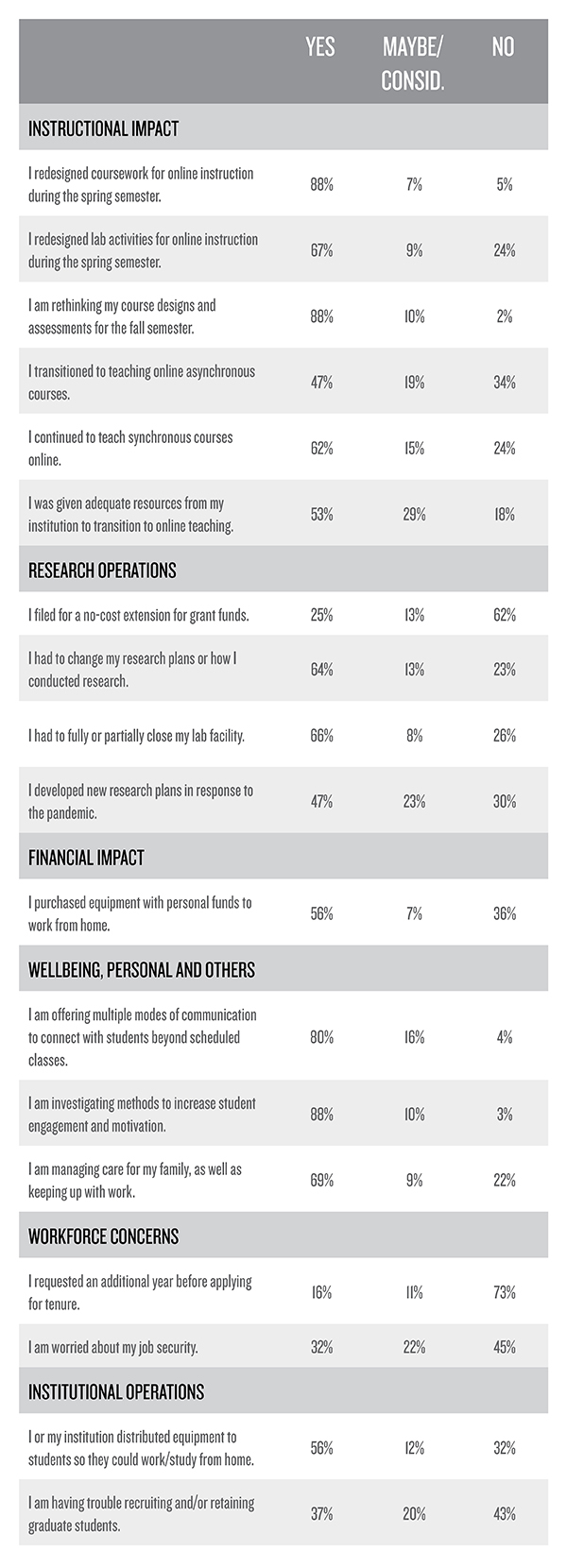SURVEYS OF ATTENDEES OF ASEE’S VIRTUAL ANNUAL CONFERENCE IN JUNE SHOW WHAT CONCERNED EDUCATORS MOST DURING LOCKDOWN
By Carolyn Wilson
Reprinted from ASEE Connections
Due to the COVID-19 pandemic, students, faculty, and staff were forced in March to make a transition within a week to working or studying from home. They had to create new at-home workspaces and shift all coursework and research to online platforms. This rapid change required all faculty, staff, and students to confront a variety of challenges in order to finish out the academic year.
During ASEE’s 2020 Annual Conference, held virtually in June, multiple panels and conversations focused on how well faculty and university leadership had handled the transition, as well as attendees’ concerns looking ahead to the fall semester. Based on these discussions, ASEE developed a survey to learn what attendees had experienced as a result of the pandemic. The survey presented quotations describing various effects of the pandemic on attendees’ professional and personal lives and steps they had taken in response. The quotations covered instruction, conduct of research, finances, institutional operations, concerns about the workforce, and concerns about their own and others’ personal wellbeing. Attendees noted whether the statements matched their experiences or plans.
Table 1 displays statements written for university administrators and leadership, including department heads, deans, and directors. Their responses showed that a large majority of this group were preoccupied with: providing necessary equipment and other support to students and faculty as they transitioned to online coursework (70% yes); rethinking policies and procedure for online instruction (80% yes); providing new online tools and software for instruction (71% yes); finding tools to help manage motivation and work/life balance concerns (76% yes); and offering multiple modes of communication for everyone (76% yes).
Table 2 displays the statements written for engineering faculty. The quotations that drew the most agreement centered around student support through redesigning courses for online instruction (88% yes); rethinking course designs for fall semester (88% yes); offering multiple modes of communication for students (80% yes); and investigating methods to increase student engagement (88% yes). Some faculty also dealt with changes to their research plans, closure of their lab spaces, work/life balance issues, and concern for their job security.
(Data were collected by ASEE’s Institutional Research and Analytics office and funded by NSF-EEC Award #1748840.)
Table 1: University Administrator Experiences on COVID-19 Response

Table 2: Faculty Experiences on COVID-19 Response

